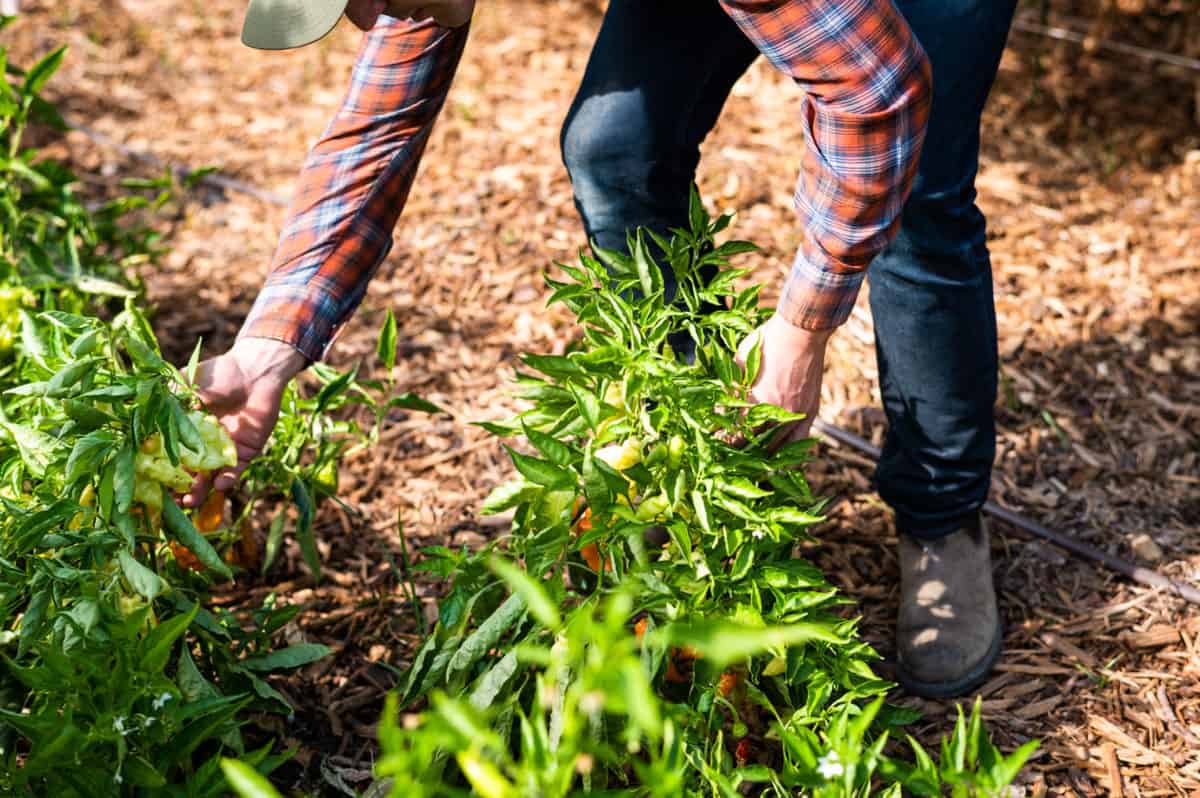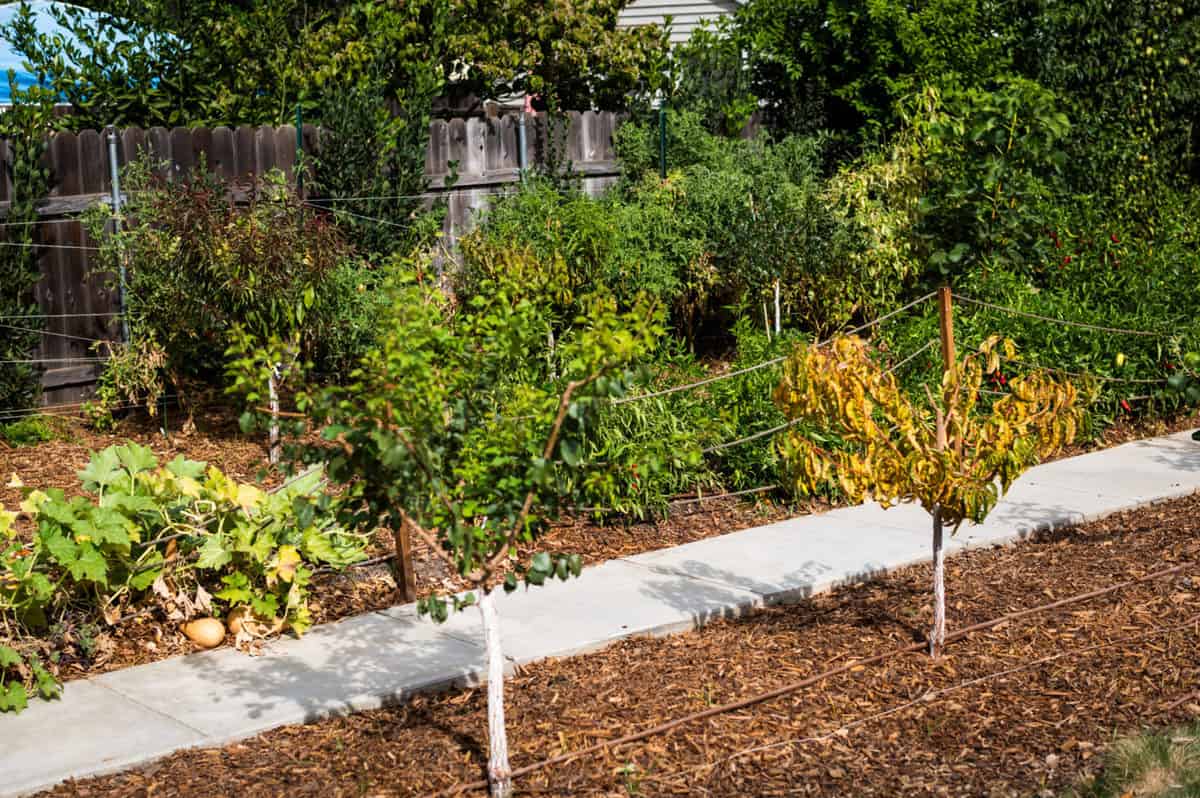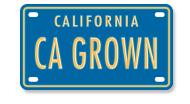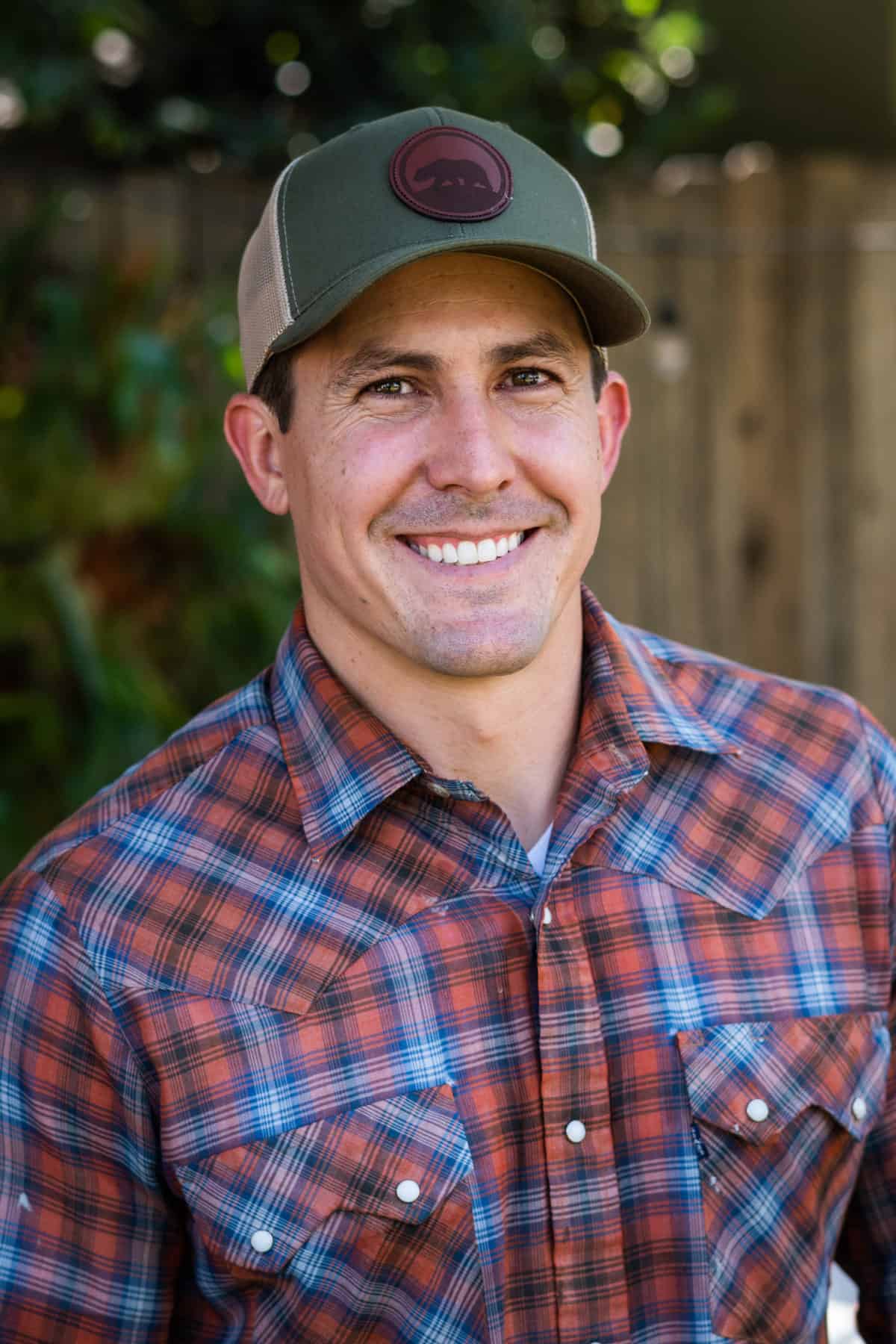Urban Farming with Kyle Hagerty of Urban Farmstead
Ever heard of “urban farming”? Kyle Hagerty is creating a modern day urban farmstead smack dab in the middle of Sacramento.
Planting the seeds…
Growing up in Monterey, Kyle always felt a connection to the surrounding farms and ranches. As a child, he enjoyed helping his mother in the garden, but didn’t garner any real experience growing fruits and veggies. That all changed after graduation, when Kyle took a job with the State Parks Department that included an outreach program where he taught children how to grow tomatoes from seed. Kyle took a few of those seeds home and began to experiment with urban farming, growing tomatoes in his backyard. Kyle did not deem these early efforts as successful, but nonetheless, he was intrigued. Rather than giving up, Kyle kept at it, viewing failures and mistakes as valuable learning experience. “Each year, my garden got bigger and bigger,” Kyle recalls.

Urban Farming: Starting from scratch…
In 2014, Kyle moved to Sacramento to take a job with the local fire department and bought a house with a bare backyard. He immediately set to work creating his very own urban farmstead. Starting with seven raised beds and assorted fruit trees, he began the process of transforming the blank space into an edible garden. Before long, that small patch of land was home to 15 different fruit trees and hundreds of other fruits, vegetables and herbs – growing throughout all four seasons.
When the city of Sacramento passed an urban farming ordinance allowing backyard farmers to sell homegrown produce from their property, Kyle saw the new ordinance as an opportunity to share his bounty and his experience with the community. He built a small wooden structure and opened up a donation based farm stand on his driveway, giving away any produce that he didn’t eat himself. The front yard farmstand allowed Kyle to educate budding urban farmers and to encourage the community to think about where their food comes from. He continued the conversation on Instagram, posting inspirational (or aspirational) pictures of his urban farmstead and gardening tips. Through social media, he connected with other local foodies and began to host pop up dinners in his backyard.
“I want people to love growing things as much as I do”…

A few years later, Kyle moved to a bigger house in East Sacramento, giving him more space to expand his farm and his family. Once again, he started from scratch with a blank slate backyard, or “abandoned lawn”, as Kyle refers to the space. After amending the soil, adding irrigation and trellises, and planting plants from seed, it is now a thriving organic garden.
Seeing the experience as another opportunity to create a thriving foodie community, he shared every step of the process on YouTube. “When I invite people into my yard, or on social media, I want to show a wide variety of things that are growing and what they look like when they are growing. We all have an idea of what a tomato looks like, or an artichoke, but not many people know what an artichoke plant looks like” Kyle says.

What’s the “why”?
What drives Kyle? “Just being able to bring people into my yard, if they live here in Sacramento, or digitally through Instagram or YouTube to see what things are like when they’re growing and what it’s like to grow things and hopefully inspire and educate people on how they can grow their own produce in their own yard”,” says Kyle.
Kyle is truly passionate about growing his own food, creating a flourishing community and helping others to think about where their food comes from. Even if you aren’t growing your own produce in your backyard, Kyle feels that it’s important to seek out fresh, locally grown produce. In doing so, you’re not only supporting local farm families with your purchase, but also supporting them by telling the market that you want California Grown produce. “The best way we can support these farms and farmers is to buy and ask for CA Grown produce.”
Want to learn more about urban farming and create your own Urban Farmstead? Here are a few frequently asked questions:
That’s easy! Check out Urban Farmstead’s YouTube Channel. It’s full of how-to videos that will guide you through every step of the process.
There’s no right answer. Even if you’ve only got a small balcony or patio, you can use planters to grow a wide variety of produce. Another pro-tip: think vertical. Trellises can dramatically increase your amount of useable space. If you’ve got more space to work with, the sky’s the limit. Take it from Kyle, who states, “Everything we grow on our urban farm is packed into our 2500 square foot backyard. We have 15 different fruit trees and hundreds of other fruits, vegetables and herbs growing throughout all four seasons.”
By growing your own fruits and vegetables, you control every step of the process. You can choose to start hard-to-find varieties from seed and you can choose to use completely organic methods if that’s something that appeals to you. Many people find gardening to be a relaxing activity. In fact, studies have shown that spending time outdoors can improve your mood and even your mental state.
Ready to dabble in urban farming? Check out our suggestions for three easy vegetables to grow in your backyard.
Keep up with Kyle’s adventures. Follow Urban Farmstead on Instagram and YouTube!
Like what you see? Follow us on Pinterest for farmer features and fabulous recipe inspiration.
Article by Hilary Rance. Photography courtesy of James Collier.


How large is your yard/farm? how long have you been there? Do you have a plot map of your yard?
Hi Bernie, great questions! We interviewed Kyle for this article on our website, so unfortunately, we don’t have those answers for you. You can reach out to him on his YouTube channel or Instagram, @urbanfarmstead, and he will be able to answer you there.
I am developing a fruit tree garden in my back yard and have watched several of your videos and find them filled with great advice. Your photographing of your work answers questions about how-to for me who is a person needing visual information in addition to word descriptions. THANKS
You mention having a “series/group” of videos showing the progress of your efforts. Is there a list of them and guidance to viewing them in practical order? What is involved with, and what results from, subscribing to your program of videos?
Hi Sallie, great questions! We interviewed Kyle for this article on our website, so unfortunately, we don’t have those answers for you. You can reach out to him on his YouTube channel or Instagram, @urbanfarmstead, and he will be able to answer you there.
Hi Kyle
I have a follower since i found your channel while you’re starting to prepare your property for planting and when you started your varieties of fruit tress. You are so inspiring.
I am intersted in your fig trees. Are you propagating them for sale. Please let me know. Thank you so much. I am from
New Jersey.
Hi Armando, you will need to reach out to Kyle directly to inquire about his fig trees, we simply interviewed him here for our website.
Dear Kyle,
I would like to buy some of your white Sapote/Capote and some Mamey Sapote.
This sounds like a great way to grow some fruit.Right now I only have crab apples
and turkey figs.I want some totally different from the fruits here in Alabama.
Hi Robert, you will need to reach out to Kyle directly on his Instagram or You Tube page to ask questions about obtaining some of his plants.
I have a 40 X 40 ft garden. Do you ever use fertilizer ?
I watched your You Tube episode on how to turn my yard into a garden and I noticed you used compost and potting soil.
Hi Kathy, you will need to reach out to Kyle directly on his Instagram or You Tube page to ask questions about what he uses in his soil.